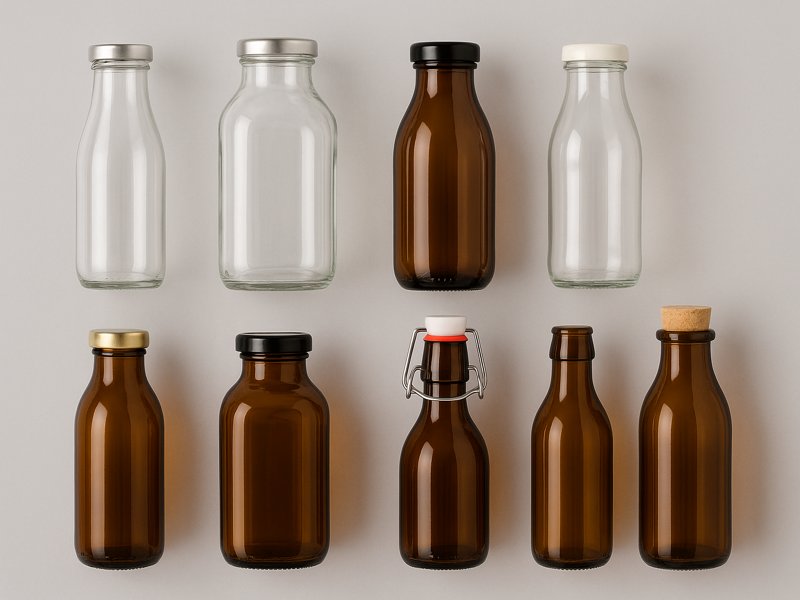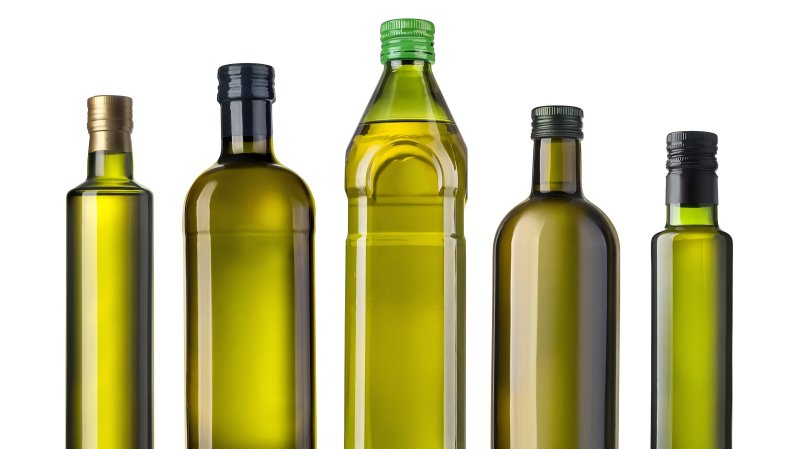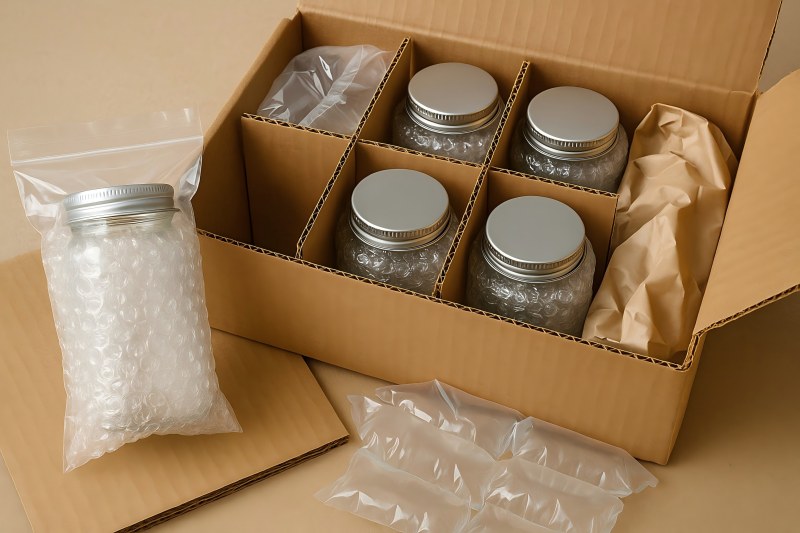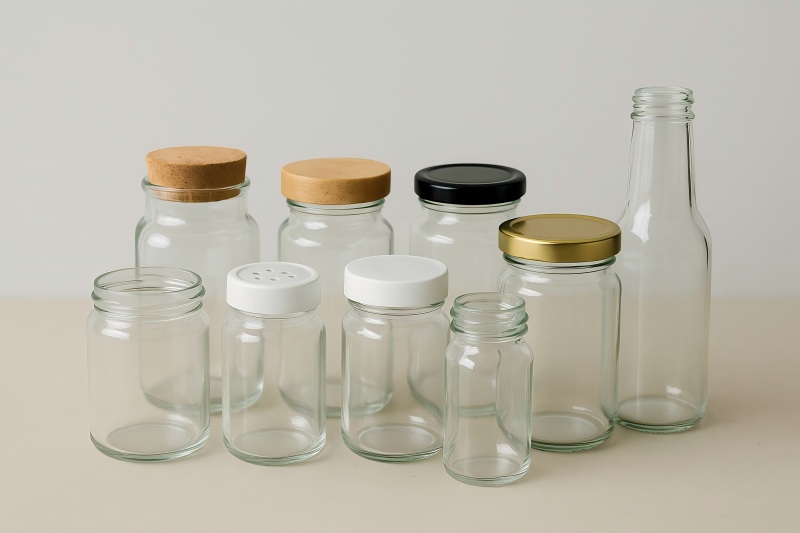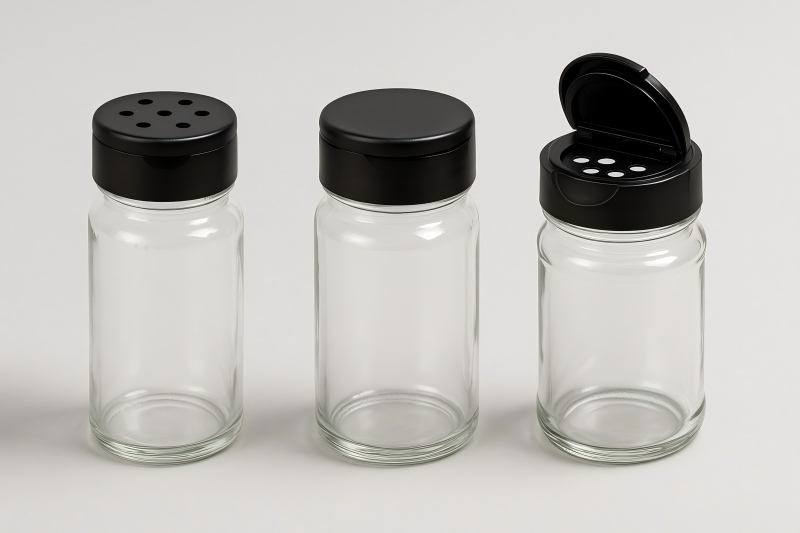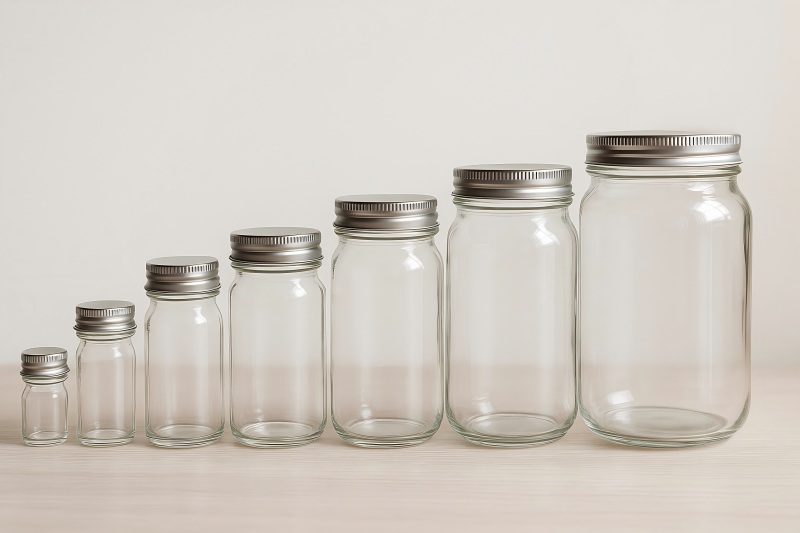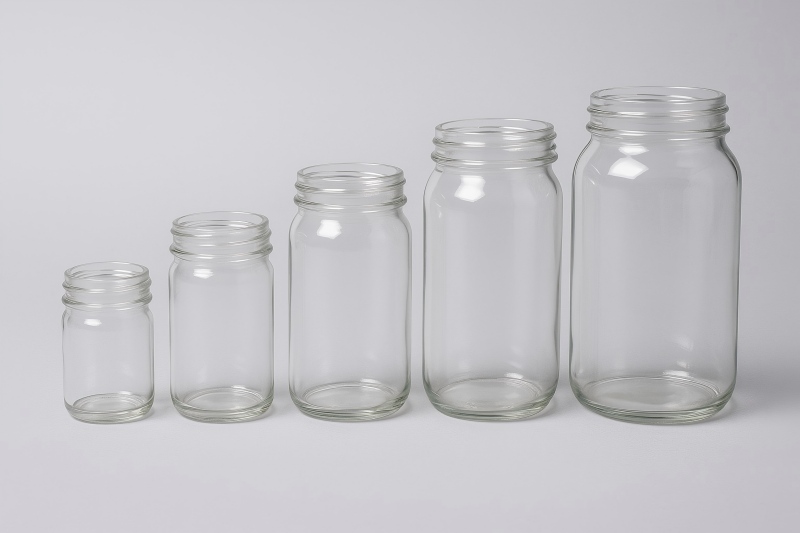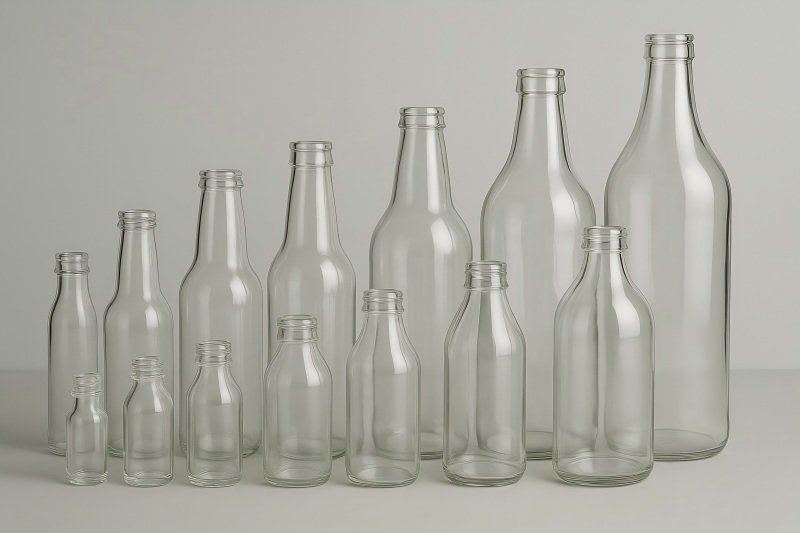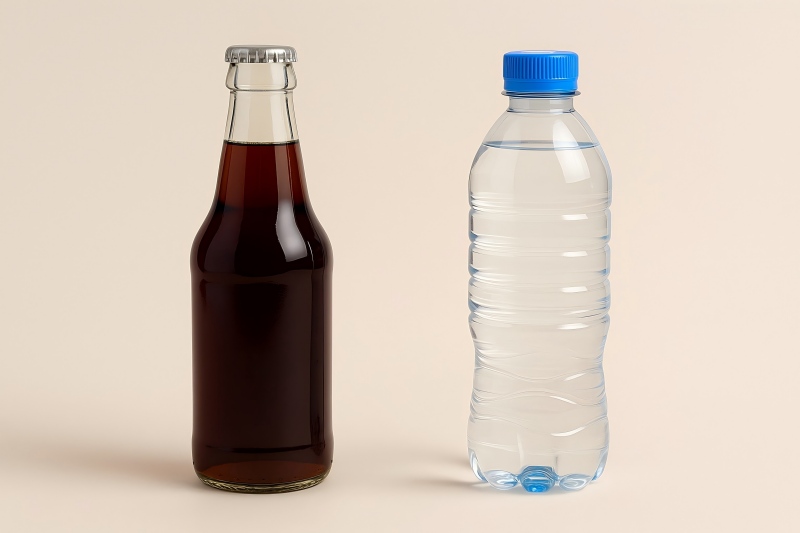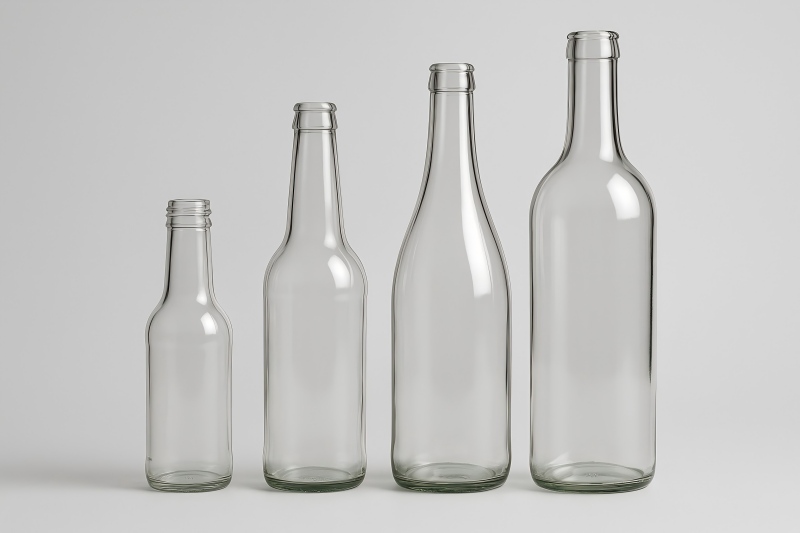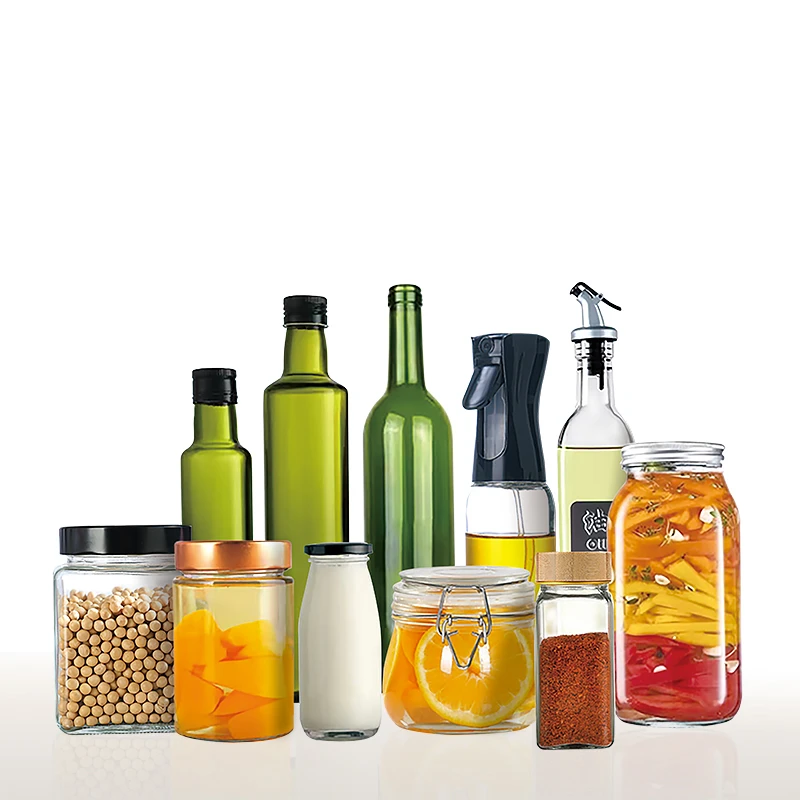How to Choose the Right Glass Juice Bottle: A Complete Buyer’s Guide
Start With The Product: Juice Type, Process, and Shelf Life
Before you look at shapes or caps, map the juice’s journey:
Juice type & acidity: Citrus and many cold-pressed blends are acidic and do well in glass; neutral pH blends still benefit from glass’s excellent barrier and inertness.
Processing method:
- HPP (High-Pressure Processing): Needs caps and bottles that survive pressure (no paneling) and offer secure sealing; glass is ideal for flavor and aroma retention.
- Hot-fill (85–95 °C typical): Requires heat-resistant glass (e.g., tempered or thick-walled) and closures with heat-compatible liners.
- Pasteurization/retort: Check bottle thermal shock resistance and closure liner specs.
- Fresh/short shelf life (refrigerated): Aesthetic/brand cues may drive more of the decision; ensure closures seal reliably for the cold chain.
Shelf life target: Longer life pushes you toward superior oxygen and aroma barriers (a glass strength), UV control, and tamper-evident features.

Choose The Right Glass: Clarity, Color, and UV Protection
- Flint (clear): Maximizes shelf appeal for bright juices; however, clear glass offers less UV protection. Combine with secondary packaging (cartons, shrink), UV-blocking labels, or display away from direct light.
- Amber: Strong UV barrier; great for light-sensitive nutrients (e.g., vitamin C). Conveys a more “functional” or “apothecary” aesthetic.
- Green: Offers moderate UV protection and a natural look, but is less protective than amber.
- Recycled content (PCR glass): Check achievable % without compromising strength or clarity—good sustainability messaging if supply is stable.
Tip: If you love Flint aesthetics but want UV defense, specify UV-absorbing coatings or labels with high ink coverage.

Pick The Capacity—and Engineer The Pour Experience
Juice is often sold in these “anchor” sizes:
- Single-serve: 150–200 ml (on-premise shots, sample sizes), 250–355 ml (typical grab-and-go), 300 ml (premium lines).
- Multi-serve: 500 ml, 750 ml, 1 L, 1.5 L.
- Foodservice/bulk: 2 L, 3 L and above (less common in glass; confirm handling and pallet limits).
Beyond volume, diameter, height, and shoulder geometry, impact line compatibility, and shelf blocking. Test grip and one-hand pouring—especially at 750 ml and above.
Fill height & headspace: Coordinate nominal fill level, expected foaming, and closure liner compression. Your contract packer can advise minimum headspace for each process (HPP vs hot-fill, etc.).
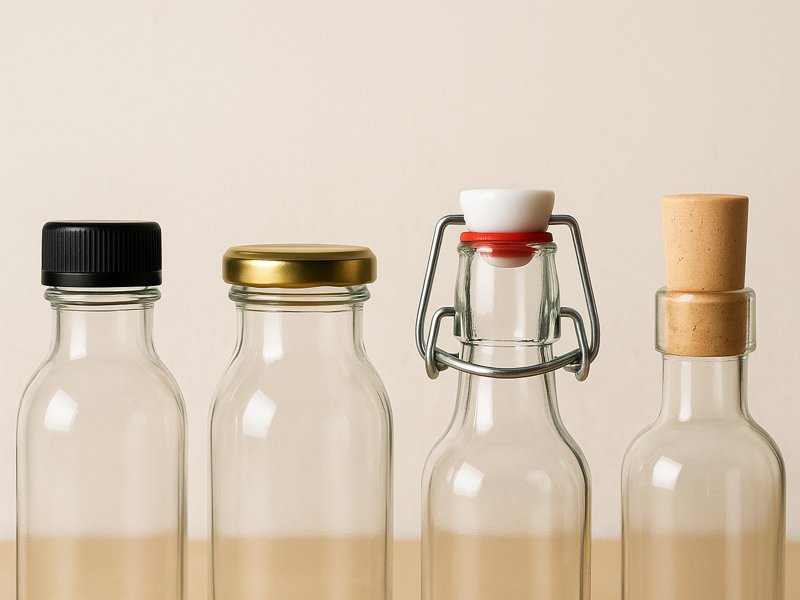
Neck finish & closures: the seal makes or breaks the bottle
Neck finishes
Common standards reduce risk and simplify sourcing:
- Twist-off finishes for metal lug caps (e.g., 38 mm, 43 mm, 48 mm).
- Continuous Thread (CT) for metal or plastic caps (e.g., 28-400, 38-400).
- Wide-mouth for pulpy smoothies or fruit bits (43–63 mm).
Choose a standard finish unless you have a strong brand reason to go custom; it keeps MOQs, lead times, and cap costs down.
Closure types & liners
- Metal lug caps (TO): Excellent for hot-fill; pair with plastisol liners made for heat application. Provide a strong vacuum and a classic “pop” tamper cue.
- Metal CT caps: Work with various liners, suitable for cold/ambient fills depending on the liner.
- Plastic CT caps (PP/HDPE): Lightweight and shatter-safe; good for cold fills/HPP; verify liner compatibility and torque retention.
- Tamper-evidence: Buttoned caps, breakaway bands, or shrink bands enhance safety perception.
Liner choices:
- Plastisol (hot-fill): Forms a hermetic seal when heated.
- Foamed PE/EPE: General-purpose cushioning for cold fills.
- TPE/Saranex/Custom barrier stacks: For specialty oxygen/CO₂ requirements (less typical for juice but useful for sensitive recipes).
Torque specs matter. Request the target application and removal torque from your closure supplier to avoid leaks or consumer over-tightening. Validate on your actual line.
Performance And Safety Testing: No Assumptions
Ask suppliers for data sheets and test history; verify with your packer:
- Thermal shock resistance: Glass should handle your max temperature delta (e.g., 45–60 °C shock for hot-fill → ambient water bath; your process may differ).
- Internal pressure & vacuum: Ensure bottles tolerate HPP pressure cycles or vacuum from hot-fill cooling.
- Drop and impact: Typical 1-meter drop tests vary; align with your distribution reality.
- Sealing integrity: Run vacuum hold or torque-to-leak tests on pilot runs.
- Migration & compliance: For food contact, confirm conformity with applicable regulations (e.g., FDA, EU Framework 1935/2004, GB standards in China) and low heavy-metal content (RoHS-like declarations).
- Dimensional tolerances: Check neck T/I/E dimensions for closure fit; establish acceptable Cpk targets for critical features.
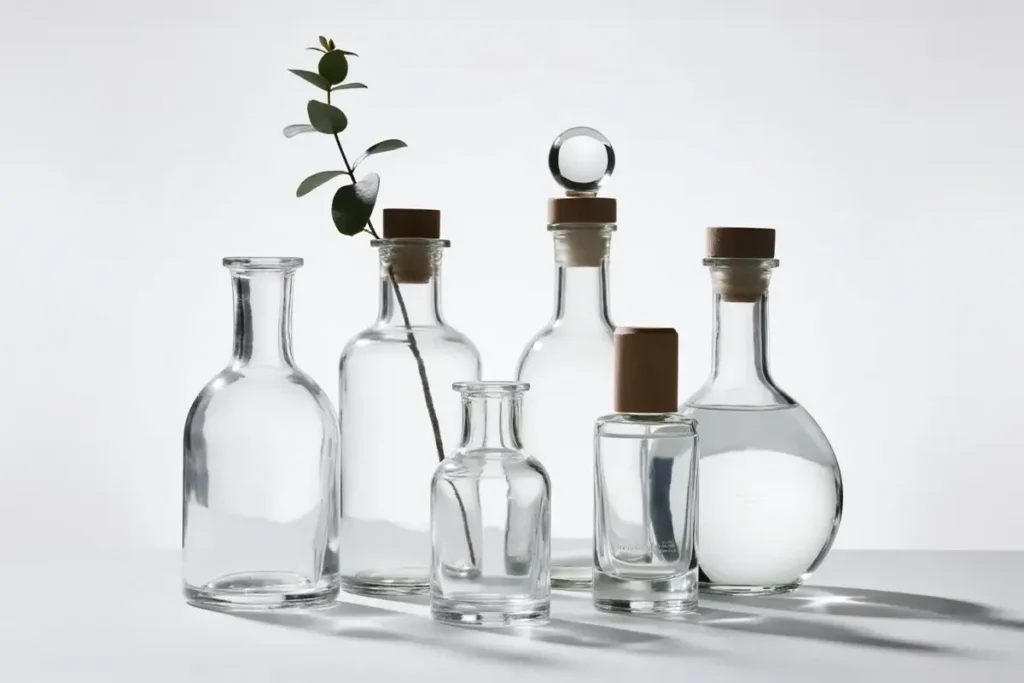
Shape, Branding, And Ergonomics: Make It Memorable—And Fillable
Classic rounds: Highly line-friendly, easy to label, efficient for secondary packaging.
Square/rectangular: Strong shelf blocking and premium cues, but require careful label and pallet planning.
Shoulders & label panels: Smooth shoulders look elegant; defined panels prevent label “smiling.”
Grip & handling: Embossed grips or subtle waists improve one-hand pour control on larger formats.
Decoration:
- Labels: Paper, PP, or shrink sleeves (great for UV block).
- Direct print: Ceramic inks or organic inks for premium lines.
- Coatings: Frosting, matte, or UV-absorbing clears; verify line friction and scuff resistance.
- Embossing/Debossing: Ownable brand assets built into the mold; raises mold cost and lead time.
Pro tip: Confirm label adhesion on coated or frosted bottles. Run a humidity/condensation test to avoid edge lifting in cold cases.
Sustainability: real signals, not just buzzwords
- Reusability: Glass is inherently reusable; consider deposit/return schemes for cafés or local deliveries.
- Recyclability: Glass is widely recyclable; ask for average recycled content and color-sorting realities in your target markets.
- Weight optimization: “Light-weighting” cuts freight emissions but reduces impact resistance. Balance sustainability, durability, and brand feel.
- Secondary packaging: Recyclable separators, water-based inks, and molded pulp dividers add to your sustainability story.
Cost Model: What Drives Price—And How To Reduce It
- Glass weight & color: Heavier and flint glass costs more; amber/green may be cheaper depending on the region.
- Custom molds: One-time tooling cost + higher MOQs; amortize over forecast volumes.
- Decoration: Sleeves and direct print add per-unit cost; order in bulk to lower unit rates.
- Freight: Glass is heavy—optimize pallet density and ship full truckloads/LCL wisely.
- Caps & liners: Specialty liners or tamper-evident features increase cost but may reduce leakage claims.
Savings levers: standard neck finishes, stock molds, consolidated cap sourcing, pre-approved decoration vendors, and negotiated long-term forecasts.
Quality Control: Incoming, In-process, and Outbound
Set a clear QC plan with your supplier and co-packer:
Incoming (bottles & caps):
- Visual defect screening (stones, blisters, checks/cracks).
- Neck/finish dimensions (go/no-go gauges).
- Weight and wall thickness sampling.
- Cap liner presence and cosmetic inspection.
In-process (filling/closing):
- Fill volume control and headspace verification.
- Cap application torque (initial and after 24 h).
- Hot-fill vacuum checks or HPP seal checks.
- Label alignment and adhesion tests.
Outbound (finished goods):
- Random drop/carton compression tests.
- Temperature cycling (if relevant to your distribution).
- Carton barcode/readability; pallet stability tests.
Regulatory & Labeling: Avoid Surprises
- Food-contact compliance for the bottle, coating, inks, and closures.
- Tamper-evidence is required by market norms (not always mandated, but strongly recommended for juices).
- Nutrition/ingredient labeling and best-before coding space—allocate a clean panel or choose sleeve windows.
- Recycling marks and deposit info (e.g., states or countries with bottle bills).
- Language/localization for multi-country launches.
Common Pitfalls—and How To Avoid Them
- Great bottle, wrong cap: Lock the neck finish and cap together early; test with your filler, not just on a bench.
- Ignoring light sensitivity: Clear glass looks beautiful; protect the product from UV with sleeves/labels or store it away from direct light.
- Underestimating freight: Glass weight can erase margin—optimize palletization and ship in full loads when possible.
- Skipping pilot runs: Tiny dimensional misses at the neck can cause mass leakage later. Pilot saves costly recalls.
- Over-customizing too soon: Validate demand before committing to molds and long lead times.
Final Takeaway
Choosing the right glass juice bottle is a balance of product protection, line performance, brand presence, sustainability, and cost. Start from your process (HPP, hot-fill, cold), pick a standard neck finish that guarantees closure availability, and validate with pilot tests. From there, fine-tune aesthetics with coatings or sleeves, build a sensible QC plan, and lock in pallet patterns that protect your product right up to the shelf. Do this well, and your juice will taste as fresh as it looks—every single time.

